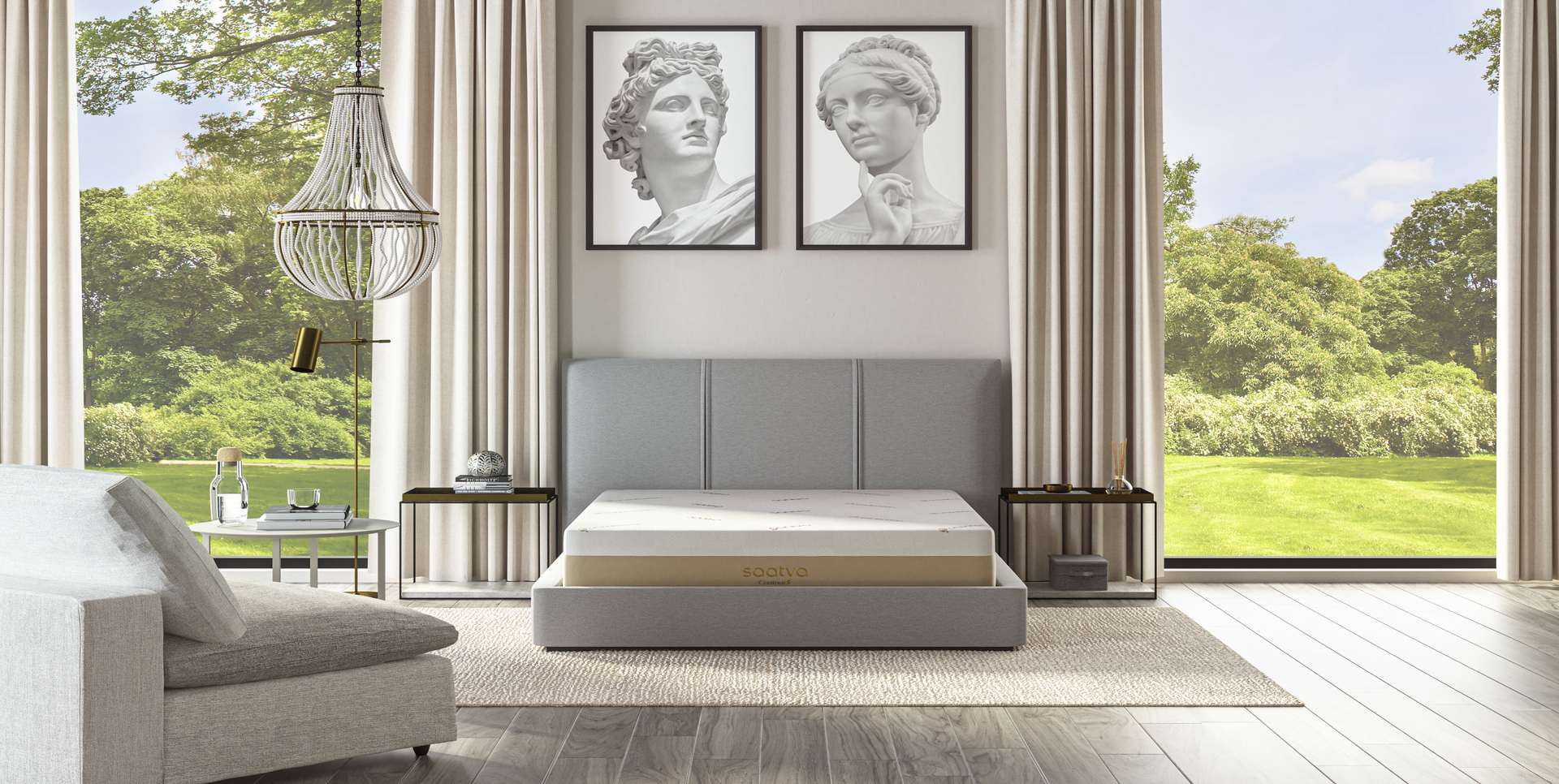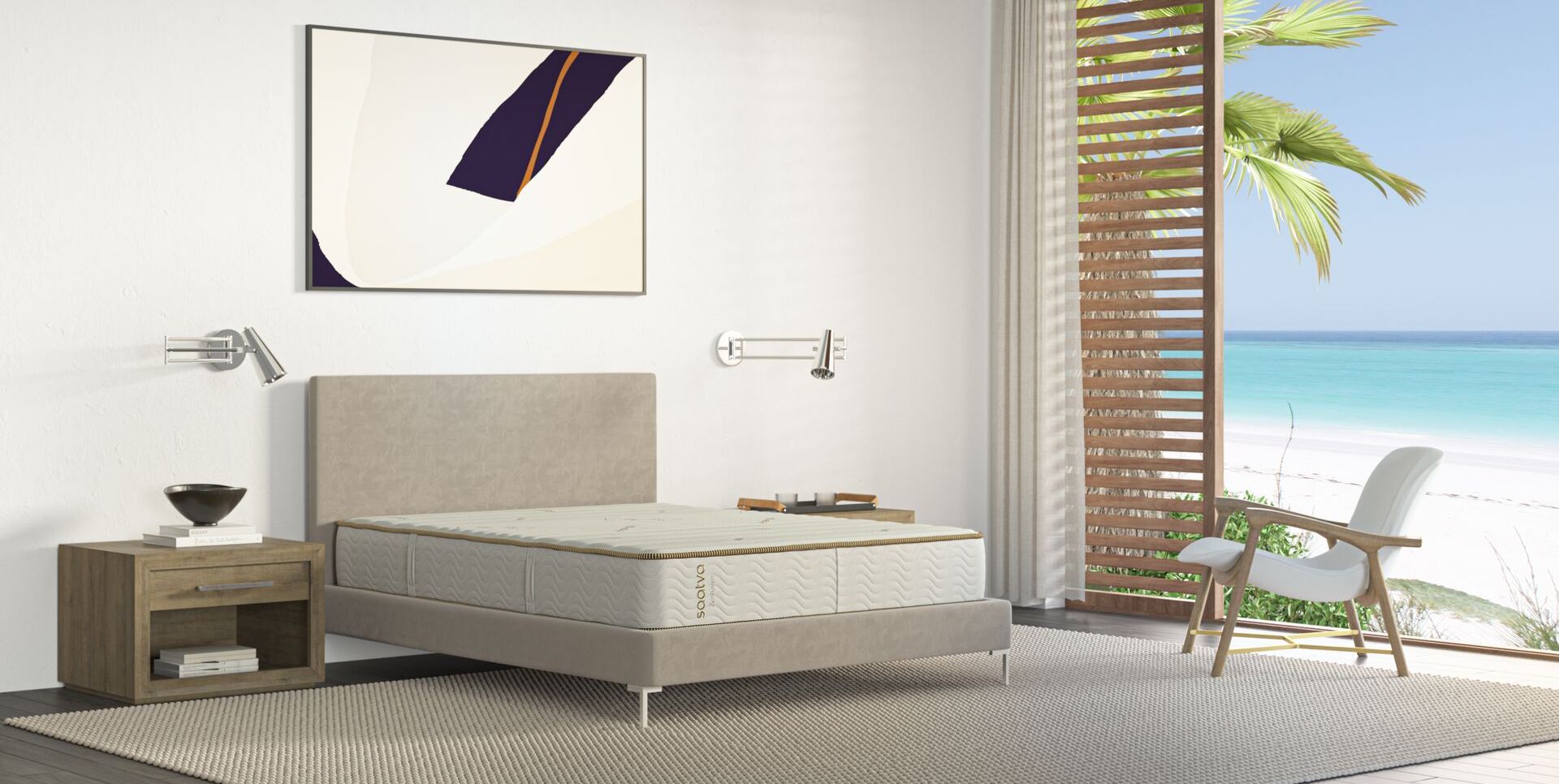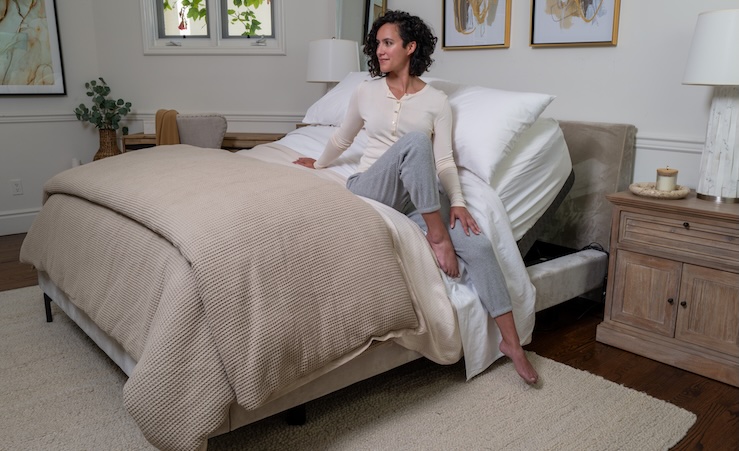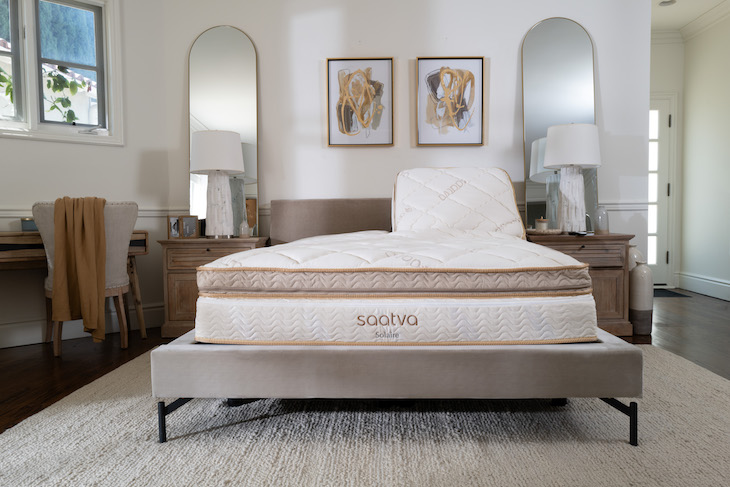If you’ve owned a queen or a king mattress for several years, you might have noticed a ridge, or hump, that has developed in the middle of it, running from head to toe. You may be wondering if this is simply normal wear and tear, a manufacturer defect, or a sign that you’re sleeping on a poor-quality mattress.
The truth is, this development is actually very common in queen and king size mattresses—so much so that it even has a name, “king’s ridge.” The phenomenon has nothing to do with the quality of your mattress. Rather, it’s related to the size of your mattress and how you sleep on it.
Read on to find out what causes a king’s ridge, how to prevent one from developing, and what to do if you notice a ridge in your mattress.
How does a king’s ridge develop?
The main reason a mattress develops a ridge is uneven weight distribution on the sleep surface.
“It is human nature to stick with what feels comfortable to you, so we have a tendency to sleep in the same spot of the mattress each night,” says Bill Fish, co-founder of sleep education website Tuck.com. “Since we spend roughly one-third of our lives sleeping, we are talking about nearly 3,000 hours a year where our bodies lie in the same place on a mattress.”
With a king-size mattress, the phenomenon can be a bit more pronounced “as due to the size, nobody tends to sleep in the middle of the mattress,” Fish explains. “Thus it isn’t a ridge per se in the middle of the mattress but a valley of sorts on each side of the center, giving the appearance that there is a ridge in the mattress.”
Although all mattresses can develop a ridge, softer mattresses and those with more comfort layers are more susceptible to this happening. Constant weight on the same areas of the mattress causes the foam and padding of the comfort layers to compress. This isn’t necessarily a bad thing, according to certified clinical sleep educator Terry Cralle, RN. “That’s because the impression fits you like a glove and is a sign the bed is breaking in and conforming to your shape.” GoodBed’s Michael Magnuson concurs: A moderate impression can create a hugged, cradled sensation.”
In most cases, such body impressions are not covered under the manufacturer’s warranty unless they exceed one inch on an innerspring mattress and three-quarters of an inch on a foam mattress. If you believe your mattress is defective, check with the manufacturer, advises Fish.
Can you get rid of a king’s ridge?
It’s hard to get rid of a king’s ridge once it develops, but if it bothers you there are things you can do to mitigate the effect. Here are some options:
- Add a mattress topper or a thick quilted pad. A latex topper is the least likely to develop impressions, because of latex’s natural resiliency.
- Flip the mattress if it’s flippable. Always check with the manufacturer first, as many mattresses these days that have separate support and comfort layers are not designed to be flipped.
- Make a point of lying in the middle of the mattress when you’re awake—perhaps while relaxing with a book on a Sunday afternoon. Spending time on this unslept-on spot can help to even out the surface, especially if done with regularity.
How do you prevent a king’s ridge from developing in the first place?
If your lumpy old mattress is due for replacement, here are some steps you can take to help prevent your new one from developing body impressions (which typically form after two to four years sleeping on the mattress).
Choose a solid base
Make sure your mattress rests on a solid foundation, such as a platform bed, says Fish. “This will allow for even distribution of weight across the entire lower side of the mattress.” If your platform or foundation is slatted, the slats should be less than four inches apart to evenly distribute the weight of the mattress as well as the sleeper. Additionally, queen, king, and California king mattresses require center support. That means your bed frame should have a center leg in the middle.
Rotate the mattress
Rotate your mattress regularly to distribute the wear—at Saatva, we recommend after the first six months, then once a year thereafter. A king-size mattress is nearly a perfect square; if you’re not a very tall person whose feet will be hanging off the mattress, you might even consider rotating it a quarter-turn once in a while.
Watch this video to see how to rotate a mattress:
Move around
“The more you can stay away from planting your body in the same place each night, the better chance you have of keeping a flat sleep surface and avoiding the king’s ridge,” says Fish. So make a conscious effort to use more of the mattress. Take the opportunity to sleep in the middle if your partner is out of town. Move closer to the center when they’re back and who knows, you might discover a new middle ground that is beneficial not only to your mattress but also to your love life.
The bottom line: A king’s ridge may become more pronounced the older your mattress gets, so if your mattress has a hump in the middle and it’s been a while since you’ve replaced your mattress, it may be time for a new one. Even a high-quality mattress should be replaced every seven to 10 years,” says Fish. Just as you wouldn’t wear the same pair of running shoes for five years or even the same set of tires on your car for five years, a mattress is no different.”
FAQs
Why is my mattress bulging in the middle?
Your mattress could be bulging in the middle due to uneven weight distribution on the sleep surface. This is especially true in queen- and king-size mattresses as you and your partner likely sleep on the left and right sides of the bed every night while no consistent weight is placed on the middle part of the mattress.
Does rotating my mattress prevent kings ridge?
Rotating your mattress won’t prevent kings ridge. However, flipping your mattress (if it’s flippable) can help prevent king’s ridge.
Ready for a new mattress but not sure where to start? Our ultimate mattress buyer’s guide will help you find the best bed for you.







